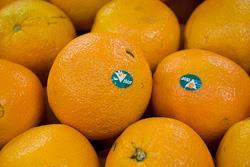
A flood of Chilean citrus to North America that stalled profits for Australian growers and exporters in 2009 could not have been predicted or avoided, according to the distributors for Australian fruit in the US.
At a meeting last week in Mildura, at the heart of Australia’s Sunraysia citrus region, representatives of Florida-based DNE World Fruit Sales and the Vancouver-based Oppenheimer Group told growers the influx of Chilean fruit had been much higher than expected, reported the Sunraysia Daily.
Last year was the first season the US market had been open to Chilean oranges, and marketers had apparently expected around 650,000 cartons of navels.
What the market received was 1.5m cartons, as Chilean exporters pulled out of markets in Europe and Japan and re-aimed export shipments at North America, causing prices in the market to plummet just at the peak of Australia’s export season in June to September.
The move stifled an agreement between Australia and South Africa to split the US citrus import market; Australia with the west coast, South Africa with the east.
Chile’s decision reportedly ended up costing Australian growers millions in lost sales, the Sunraysia Daily report said.
The purpose of last week’s meeting at the Murray Valley Citrus Growers office was to provide growers with an explanation for the apparent failure of DNE and Oppenheimer’s market intelligence.
One of the hardest aspects of the Chilean imports to deal with, according to DNE’s national sales officer Stuart Monaghan, was the short period in which the fruit arrived.
He said the majority of the Chilean imports arrived in a three to four-week period, rather than being staggered over a longer time to stabilise prices.
Besides navel oranges, Chile also sent significant volumes of clementines, lemons, tangelos and tangerines to the US last year.
The new Australian navel season will begin this year around late April to early May.



